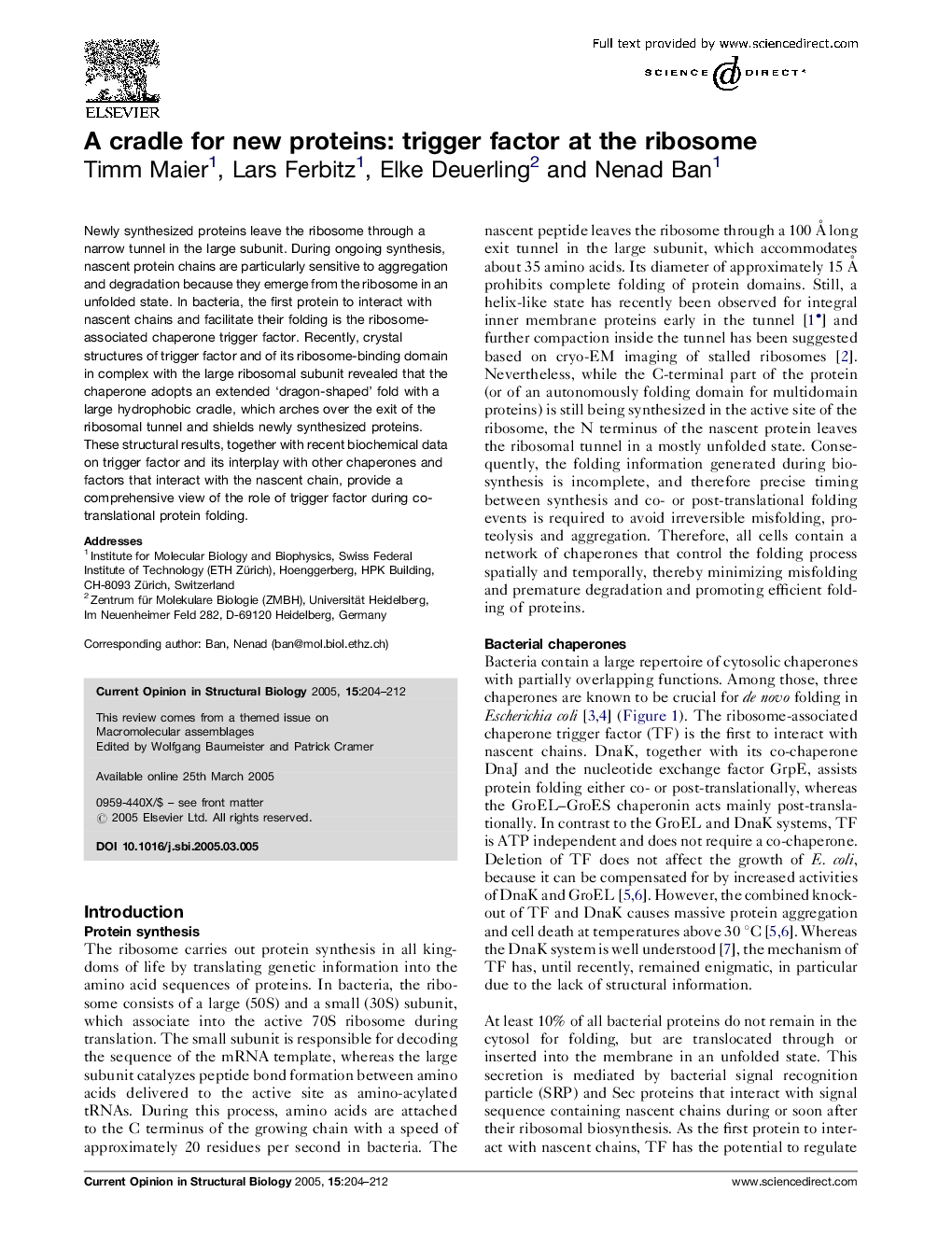| Article ID | Journal | Published Year | Pages | File Type |
|---|---|---|---|---|
| 10822791 | Current Opinion in Structural Biology | 2005 | 9 Pages |
Abstract
Newly synthesized proteins leave the ribosome through a narrow tunnel in the large subunit. During ongoing synthesis, nascent protein chains are particularly sensitive to aggregation and degradation because they emerge from the ribosome in an unfolded state. In bacteria, the first protein to interact with nascent chains and facilitate their folding is the ribosome-associated chaperone trigger factor. Recently, crystal structures of trigger factor and of its ribosome-binding domain in complex with the large ribosomal subunit revealed that the chaperone adopts an extended 'dragon-shaped' fold with a large hydrophobic cradle, which arches over the exit of the ribosomal tunnel and shields newly synthesized proteins. These structural results, together with recent biochemical data on trigger factor and its interplay with other chaperones and factors that interact with the nascent chain, provide a comprehensive view of the role of trigger factor during co-translational protein folding.
Related Topics
Life Sciences
Biochemistry, Genetics and Molecular Biology
Biochemistry
Authors
Timm Maier, Lars Ferbitz, Elke Deuerling, Nenad Ban,
